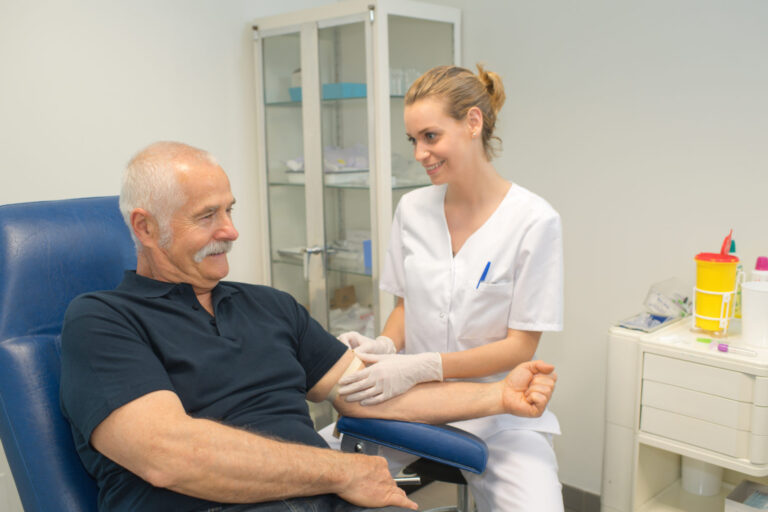Only 4 states in the United States require someone get a phlebotomy certification in order to draw blood. The states are California, Colorado, Louisiana and Nevada.
But if you don’t live in one of those 4 states, you still may need to get certified. That’s because most employers will require that their phlebotomists have a certification. And, even if they don’t, getting a certification can give you an advantage when looking for a job.
How To Get a Phlebotomy Certification
And when it is time for employment, you need to show your potential employee that you are qualified for this job.
So how will you become a certified phlebotomist? The short answer to that is to take a certification exam and pass it. For the longer answer, read on to learn the basics of what you should know about phlebotomist certifications.
Steps To Getting Certified
The first step is to get a high school degree or your GED. This is necessary in order to get into a phlebotomy training program. However, some high schools offer phlebotomy training. In this case, you may not need to enroll in further training.
The next step is usually to enrol in a phlebotomy training program. On average, this programs take about a year to complete. However, they may take a little less or more time depending on the program.
These programs are often done through local community colleges or vocational tech schools.
After your training, it’s time to get certified. There a few different certifications you can get. Some of the common ones include Phlebotomy Technician, Registered Phlebotomy Technician and Ceritifed Phlebotomy Technician.
But the question becomes where and how to get a phlebotomy certification. There are five widely recognized certifying bodies that can give you the exam to be a certified phlebotomist. Here they are along with requirements needed:
American Society for Clinical Pathology (ASCP)
To be able to take Phlebotomy Technician (PBT) exam, you will need at least one of these requirements:
- High school diploma or equivalent along with…
- the completion of a NAACLS-approved phlebotomy program within the last five years
- completion of an accepted two-part phlebotomy program that consists of 40 hours of classroom training and 100 hours of clinical training in an accredited lab with a minimum of 100 successful venipunctures and skin punctures
- completion of one year of accepted full-time work experience in an accredited lab within the past five years
- MT, MLS or MLT certification
- DPT certification and at least 100 successful unaided non-donor blood collections within the past five years
The American Society of Phlebotomy Technicians (ASPT)
To be able to take your certification exam, you will need these requirements:
- One year of part-time phlebotomist or six months of full-time phlebotomist experience or a letter from your health care supervisor stating that your work is procuring
- Blood specimens regularly along with membership application on facility letterhead
- Successfully completing an accredited phlebotomy program
- A minimum of 100 documented successful venipunctures
- 5 documented skin punctures
- A current ASPT membership
National Phlebotomy Association (NPA)
To be able to take your certification exam, you will need these requirements:
- One year experience as a phlebotomist
- Currently employed
- Your phlebotomy program includes:
- Venipuncture techniques
- A hands-on clinical practical internship
- 160 classroom hours in addition to the clinical practical internship and 16 continuing education units
National Healthcareer Association (NHA)
To be able to take your certification exam, you will need these requirements:
- Successfully completing a phlebotomy program which includes:
- 30 venipunctures and 10 capillary sticks on live humans
- Have a high school diploma or GED
National Center for Competency (NCCT) Certification
To be able to take your certification exam, you will need at least one of these requirements:
- Currently a student in a a phlebotomy technician program from an NCCT-authorized school or has graduated in an NCCT-authorized school within the last 5 years
- Have completed one year of verifiable full-time employment as a phlebotomy technician practitioner within the past five years
- Have completed your phlebotomy technician training or the equivalent while performing service in the U.S. military within the past five years








